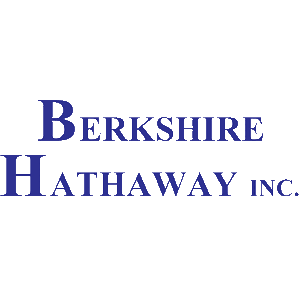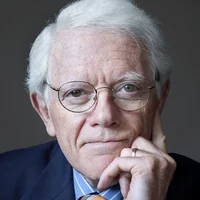
Dream Impact Trust
TSX:MPCT.UN

Dream Impact Trust?

| US |

|
Johnson & Johnson
NYSE:JNJ
|
Pharmaceuticals
|
| US |

|
Berkshire Hathaway Inc
NYSE:BRK.A
|
Financial Services
|
| US |

|
Bank of America Corp
NYSE:BAC
|
Banking
|
| US |

|
Mastercard Inc
NYSE:MA
|
Technology
|
| US |

|
UnitedHealth Group Inc
NYSE:UNH
|
Health Care
|
| US |

|
Exxon Mobil Corp
NYSE:XOM
|
Energy
|
| US |

|
Pfizer Inc
NYSE:PFE
|
Pharmaceuticals
|
| US |

|
Palantir Technologies Inc
NYSE:PLTR
|
Technology
|
| US |

|
Nike Inc
NYSE:NKE
|
Textiles, Apparel & Luxury Goods
|
| US |

|
Visa Inc
NYSE:V
|
Technology
|
| CN |

|
Alibaba Group Holding Ltd
NYSE:BABA
|
Retail
|
| US |

|
JPMorgan Chase & Co
NYSE:JPM
|
Banking
|
| US |

|
Coca-Cola Co
NYSE:KO
|
Beverages
|
| US |

|
Walmart Inc
NYSE:WMT
|
Retail
|
| US |

|
Verizon Communications Inc
NYSE:VZ
|
Telecommunication
|
| US |

|
Chevron Corp
NYSE:CVX
|
Energy
|
We'll email you a reminder when the closing price reaches USD.
If you don’t study any companies, you have the same success buying stocks as you do in a poker game if you bet without looking at your cards.

Utilize notes to systematically review your investment decisions. By reflecting on past outcomes, you can discern effective strategies and identify those that underperformed. This continuous feedback loop enables you to adapt and refine your approach, optimizing for future success.
Each note serves as a learning point, offering insights into your decision-making processes. Over time, you'll accumulate a personalized database of knowledge, enhancing your ability to make informed decisions quickly and effectively.
With a comprehensive record of your investment history at your fingertips, you can compare current opportunities against past experiences. This not only bolsters your confidence but also ensures that each decision is grounded in a well-documented rationale.
Do you really want to delete this note?
This action cannot be undone.

| 52 Week Range |
1.47
4.37
|
| Price Target |
|
We'll email you a reminder when the closing price reaches CAD.
Choose the stock you wish to monitor with a price alert.

|
Johnson & Johnson
NYSE:JNJ
|
US |

|
Berkshire Hathaway Inc
NYSE:BRK.A
|
US |

|
Bank of America Corp
NYSE:BAC
|
US |

|
Mastercard Inc
NYSE:MA
|
US |

|
UnitedHealth Group Inc
NYSE:UNH
|
US |

|
Exxon Mobil Corp
NYSE:XOM
|
US |

|
Pfizer Inc
NYSE:PFE
|
US |

|
Palantir Technologies Inc
NYSE:PLTR
|
US |

|
Nike Inc
NYSE:NKE
|
US |

|
Visa Inc
NYSE:V
|
US |

|
Alibaba Group Holding Ltd
NYSE:BABA
|
CN |

|
JPMorgan Chase & Co
NYSE:JPM
|
US |

|
Coca-Cola Co
NYSE:KO
|
US |

|
Walmart Inc
NYSE:WMT
|
US |

|
Verizon Communications Inc
NYSE:VZ
|
US |

|
Chevron Corp
NYSE:CVX
|
US |
This alert will be permanently deleted.



























Good morning, ladies and gentlemen. Welcome to the Dream Impact Trust First Quarter Conference Call for Tuesday, May 6, 2025. Please be advised that all participants are currently in listen-only mode and the conference is being recorded. [Operator's Instructions] During this call, management of Dream Impact Trust may make statements containing forward-looking information within the meaning of applicable securities legislation. Forward-looking information is based on a number of assumptions and is subject to a number of risks and uncertainties, many of which are beyond the Trust's control that could cause actual results to differ materially from those that are disclosed in or implied by such forward-looking information. Additional information about these assumptions and risks and uncertainties is contained in the Trust's filings with securities regulators, including its final long-form prospectus. These filings are also available on Dream Impact Trust's website at www.dreamimpacttrust.ca. Your host for today will be Mr. Michael Cooper, Portfolio Manager. Mr. Cooper, please proceed.
Thank you, operator. Good morning, everybody. Today, I'm here with Meaghan Peloso, who will provide comments in a few minutes. And after she speaks, I'd like to get into some specifics on the company. But first, we're operating in an environment that certainly is chaotic and uncertain. The federal government has been reelected. And in some ways, that's good for our policies that Impact Trust relies on. So that's good news. What I would say is we keep hearing about a housing crisis and yet all the new purpose-built rentals are leasing up slower than we would have expected, and we're trying to figure out how do all these things reconcile. And I think the point is Canada doesn't have enough cheap residences. I'd say that we probably have tremendous demand, let's say, in Toronto for apartments that are between $1,000 and $1,500, but we're leasing them at $2,500 to $2,700 when you build a new market building. So I think that is a real problem. But when we get to new buildings, they're leasing up. They're leasing up a little bit slower. We're making progress on everything, but we're really in quite an odd housing market.
Our value-add apartments are performing very well, consistent or better than budget for the first quarter. We're seeing a little bit more turnover and then we get big step-ups and that kind of offsets maybe the rental rate increases that we hoped for, but the numbers are pretty good or better than we anticipated. On the purpose-built rental, we're getting our buildings finished. We got quite a few buildings in lease-up. They're excellent buildings. They're leasing up slower than we had originally budgeted, but we've got great financing on them for the most part, and they're working out pretty good. But what it means is things are tough. It's hard to get things done that we would have thought would be easy. After Meaghan speaks, I want to talk about some specifics about what we're starting. But overall, the company is doing very poorly in the stock market. It's doing a little bit better in real life. And what we're doing is we're planning out the next 5 years for what the company is going to look like in 2030 and how we're going to get there, for the most part, relying on Impact Trust owned resources. So I'll give more insight into that. But first, Meaghan, do you want to speak a little bit about how the quarter went?
Sure. Thank you, Michael. Good morning, everyone. In the first quarter, the Trust recognized a net loss of $3.8 million compared to $5.4 million in the prior year. The improvement in earnings was driven by fluctuations in fair value adjustments, earnings from condo occupancies at Brightwater and income from multifamily assets in the lease-up phase, including Maple House, Aalto II and Zibi. Partially offsetting this was a gain on sale of a passive investment last year and reduced NOI from office properties. As it relates to our recurring income segment, we're seeing good growth from our multifamily portfolio. NOI in the period was $2.6 million compared to $1.5 million in the prior year, largely due to ongoing lease-up of residential blocks of Zibi and Canary Landing.
As of May 1, Maple House and Aalto II were both approximately 80% leased. Birch House, which began leasing last quarter, is 26% leased to date, and we expect to move Birch House from the development segment to recurring income later this year when construction is substantially complete. Construction is still well underway at Cherry House, and we expect leasing for the first of the 3 buildings to commence in the summer of this year. With the 855 units at Cherry House and 600 units at Odenak under construction, the trust will add a further 1,400 units at 100% to our multifamily portfolio by the end of 2027.
As it relates to our Development segment, the Trust generated income of $2.1 million compared to $0.3 million in the prior year. A lot of the increase in earnings was attributable to occupancy income at Brightwater as roughly 3/4 of units at the Mason occupied in the first quarter with final closings expected later this year. Additionally, the increase in earnings from the segment was from the composition of fair value adjustments year-over-year, partially offset by a gain on the passive asset sale last year. Now on the liquidity front, as of March 31, the Trust had total cash on hand of $8.8 million and received gross proceeds of $6.2 million from selling our interest in Zibi Block 204 to DAM subsequent to the quarter. In addition, as part of that sale, $5.4 million of infrastructure debt was repaid at the Trust share, which reduces the trust land loan exposure and further supports our liquidity objectives. In addition to the ACLP financing secured for $49 million in the quarter, we continue to make good progress on our upcoming debt maturities. Subsequent to quarter end, we repaid a $47 million construction loan at share and replaced it with takeout financing. And we currently have another $85 million of infrastructure loans in advanced lender discussions that should be extended in short order. With that, I'll turn the call back over to Michael.
Thanks, Meaghan. So our book equity is close to $400 million and our market cap is $50 million. That's a big difference even if you knock off values on the $400 million to get to $50 million is pretty tough marking. But I think it's to do with the fact that we've got a lot of development and we have a reasonable amount of leverage and things are moving slowly. So when we're paying interest on land before it becomes under development, that interest cost isn't adding to value. It's just being kind of wasted. But having said that, on 49 Ontario, we're very pleased with the loan that we received the $647 million from the federal government. Those loans, the interest rate is locked in just before you do your first draw. So today, a 10-year loan would be about -- well, we just actually did one at Block 204, the land that was sold to Dream. That loan was locked in within the last month, and that was about 3.6% for 10 years. I think that's the same rate that you could get today.
So we can borrow $647 million for 49 Ontario at maybe 3.3%, 3.4%, which is very viable for building the building. We expect to have a significant profit in the building. What we're seeing is that the construction costs are coming in line, and we think there's an opportunity to save quite a bit of money. So the market cap of the whole company is $50 million. We think that it's probable or possible that on 49 Ontario alone, we could save the equivalent of the market cap, $50 million on construction costs. We'll see how that plays out. We should know a lot more by the first or second quarter of next year. But we're deeply into it. And we expect to start construction on October 1, the day after the tenant moves out. And we're quite excited that these are coming together. The 2 pieces remaining are tendering and locking the debt. After that, we should be pretty comfortable in the knowledge that we have.
The other benefit of lower construction cost is it means we can hit the returns that we're trying to get with lower rents. And 49 Ontario is a well-designed building. It's pretty straightforward to build. The market suites are pretty desirable. And we think we'll be able to lease at $200 or $300 less than the surrounding buildings and get our returns. So it's pretty exciting that we've got a lot of opportunities there. So I mentioned that just on that one building, the cost savings could equal the market cap. The profit on half could equal the market cap. So hopefully, we'll make a lot of progress on that over the next 6 or 9 months. We're pleased that we brought in a 10% partner. We're trying to lock up a few of the remaining details and then we could bring in other partners. And we'll see how that goes closer to the end of the year.
At Quayside, we're making progress. We have a conditional loan approved from CMHC, and we'll get back to work as soon as CMHC and the Minister of Housing have new mandate letters. But I think we're in good shape to finish that up. We're working very closely with the city and Waterfront Toronto, and we're all working very collaboratively. And we hope that by the end of the year, we'll be in the same position at Quayside as we are now at 49 Ontario, and that could be a start in 2026. So these are very big projects, lots of opportunities to make great development returns. And Meaghan mentioned that Block 10 is up to 26%. That actually, I think, 27%. It's a small building that's part of the indigenous hub, and that one leased up 9% in the last month alone. So that one is picking up momentum. The large one, Block 8, we're about 80% leased. It's getting leased. We're on schedule to be able to meet the requirements to make that a nonrecourse loan, most likely within the next year.
So a lot of things are going pretty good. But the Toronto, specifically the Toronto condo market is terrible. The market and people are comparing it to 1992. Cranes are coming down off of condos. They're not being used again. Very few buildings are being started. Condos that are finished are flooding the market, and those are competition for the apartments. But the expectation is over the next 18 months, the completed condos are going to be reduced significantly. In the last 2 years, there's only been about 3 condo buildings that have been started in Toronto. So there's not going to be a lot of completions on the apartment front. People are trying to be able to start apartments. We're pretty excited that 49 Ontario's timing will be -- there's not going to be a lot of competition with trades. There's not going to be a lot of competition for leasing. So I think we're making good timing there. So there's a lot of different factors. But overall, we're making progress everywhere. We have been very focused on the liquidity of the company and what the company is going to be. And 2025, we use 5-year plans. We're really focused on 2030 and what assets we're going to have in the business, what they're going to be worth, and it looks good.
So the general plan is we're in the process now of selling a few assets. We definitely want to sell more of the commercial assets. We want to realize like on the condos like we're doing at Brightwater, we're going to get some cash out of that. So we basically have assets we expect to sell each year over the next few years, and that should fund the business. And then we look at like one would be great to have 4 Ontario, our portion of Quayside, maybe Block 10, maybe the West Don Lands and maybe some of the Zibi assets, but pretty much sell a lot of the rest, and we'll have one of the best apartment portfolios. And it should be at a debt level that's quite manageable, and that's what we're all focused on achieving. And our internal numbers using much more pessimistic values and having lots of margin and safety show that we're generating increases in NAV over the next 5 years from significant -- from a base that's significantly higher than the trading price. So it's a difficult market to operate.
The Canadian stock market is not doing well pretty much in any asset class. Within real estate, I don't think there's been a lot of equity issues in the REITs or a lot of interest in the REITs. And our microcap doing development with a fair amount of debt, it's not really working in the stock market, but we're really focused on how do we create real value through the work we're doing. And I think we're getting a lot of positive feedback, although this is a difficult market in development, a very difficult market in condo. So we really switched away from that. And I think we expect to be able to provide updates to our shareholders. But it's kind of hard to give you meaningful updates every 90 days because the actual business -- sometimes not that much happens in 90 days. So we're pretty pleased with some of the debt we've done. I think our value-add apartments are now at 65% debt to value. As I said, they're performing better than budget marginally in the first quarter.
So we see lots of decent things, but it's going to be a lot of work to get to where we want to be, and we appreciate shareholders sticking with us. Me and I are happy to answer questions now. And I would also say that Meaghan and I are always available to answer questions throughout the -- in between the quarters. So with that, operator, if there's any questions, we'd be happy to answer them.
[Operator Instructions] The first question is from David Chrystal with Ventum Capital Markets.
On the 49 Ontario disposition, can you provide any additional color on the terms, including the gross proceeds? And then as far as the 10% stake, is it simple ownership? Or is there any managing interest or fees earned by your partner?
The purchase price is $145 million for the land. The partner, I think, will be adding a lot of value, and they will be our partner in portions of the development, but I can't provide further details at this time. Does that make sense?
Yes. Yes, that is helpful. And then as far as the balance of 49 Ontario, are you in any advanced discussions with other partners?
To be blunt, we really want to -- I think we want to get the interest rate fixed because that's a pretty major issue in terms of attracting other partners. The type of financing that we deal with the federal government on is pretty complicated. And for many investors, it's hard to understand it. So I think that by locking in that rate, it will make it much easier to see the returns. So I think our view is we've got a lot of work to do. If we can get the kind of savings we expect, the numbers will look significantly better. If we can lock the debt in at 3.3%, it's going to look like a great investment. So our view is let's go see. And I can tell you that internally, we go back and forth on , well, if we do all that work, how much of it should we sell? Maybe we should sell an old apartment building and keep more of this. So we'll play it by year as we get more information.
Okay. And then as far as your target to sell ultimately, it sounds like from your prepared remarks, it might be 50% and retain the other 50%. Is that fair to say?
I think it's unlikely we would sell more than 50%.
Okay. And then you mentioned some cost savings. Do you have a rough estimate of total cost? And again, reading between the lines, it sounds like it could be $50 million off your original projections, but can you kind of narrow that range for us?
I just -- I'm not going to give you precise numbers. But generally, what I would say is if total costs are $400 million, we think the savings could be 10% to 15%, which would get us to $50 million in the midpoint.
And the $400 million, is that for -- that's total additional costs on top of the land?
No, that's just construction.
Just construction.
That's not total cost. That's not -- like that's not interest, it's not architecture. It's just the cost that I think we get the savings on.
Okay. So what -- do you have a rough estimate of the all-in cost, excluding land? So I guess put another way, the incremental spend required?
Well, I'll give you a hint. The loan is $647 million, and it's about a 90% debt to value.
Okay. That's perfect. Okay.
Although everything is changing with the cost savings. So I wish I could say, hey, here's a really simple way to think about it. The problem is it's not that simple. So we may be in a position where we don't need as much of the loan as is available, which would make it pretty interesting if we get the same NOI and have less debt.
The next question is from Linda Wang with TD Securities.
This is in for Sam Damiani. I just had a question. We understand that there is at least one other property that's listed for sale. We're wondering if you can provide an outlook for disposition activity in 2025 and also timing.
I would suggest that if anybody gives you guidance on timing for dispositions in 2025, they don't know what they're talking about. So I don't really -- like in Dream Office, we sold 438 University. We put up for sale at the beginning of 2024. We spoke to analysts every second minute about the progress, and we closed it in January 2025, and that went according to schedule. It's just hard to get things done now. I'm not sure which property you're referring to because we have action on a number of properties. I think this year, we're probably looking at maybe $30 million of sales, and some of that will be commercial and some of it may be residential.
The next question is from Roger Lafontaine with Nugget Capital.
Congratulations on the results. And just to follow up on Linda's question there. Was there any update you could provide on the capital view land? I know you were talking about that in prior calls and some buyers have expressed interest in that property. And I was wondering if there's any update there.
It's a great question. And it's a perfect example of what I was just saying. We have a net zero community called Zibi. We have a utility that we own with Ottawa Hydro. The use of the land needs to use net zero as part of our obligations to the city. We are talking to people and it's complicated. We'll see how we do. In Ontario, we're getting through a lot of land. And at Zibi, we've got an Ontario loan for infrastructure and a Quebec loan for infrastructure. In Ontario, I think we have 5 sites left. And I think we only have like $20 million of debt. So it's very low for the site. It's very much in order. On the Quebec side, we have a lot of land in Gatineau. And we keep thinking that we're going to be able to use some of that land for different public purposes, whether it's a museum or a conference center. It's been really slow. So we thought maybe we try to sell the land. And we're working with people. We've got -- we definitely have inquiries. We're way beyond that, but there's a lot of design that has to go in for somebody to be prepared to finalize a purchase, and we'll see whether it's worth it or not. So we don't have an update like this is the amount of money and the timing, but we are in discussions with different purchasers, very specific and granular discussions, and we'll see if we can make it work.
The next question is from Sairam Srinivas with Cormark Securities.
Congrats, Michael, and a good quarter. Michael, it's very early days, but just probably looking at the little garment in Ottawa now, are you seeing any green shoots in terms of initiatives that could be opportunities for you guys?
It's a really great question because I probably shouldn't say this, but we're using a different contractor for the latest development block. And we have Head Street Square, which is where all the activity in Ontario has been and Block 204 is the last building to sort of make that into a community. And the builder has been doing a great job at building the construction and keeping it very clean and simple. So I think what we're seeing is a lot more people on the site as they move into Block 206 and the other sites that -- and the other buildings that are there. So there's a lot more people. We're getting more interest from retail tenants. And I hope within the next quarter, we'll have some of those deals completed. Block 204 is progressing very well. So I think we've got a lot of good stuff happening. The commercial has been very tough. And I don't think we're going to do the minimum amount of commercial. In fact, we're talking to the various government authorities about no longer having to do commercial on residential buildings. I think we have enough commercial on the site already. But the amount of people and the condition of the site looks really good. Block 10 is the building that we finished last year.
It's approaching 80% leased, and it's doing very well. We got to get it and Block 10, the original one, it is just over 90% leased because it's actually competing with Block 11. So hopefully, we'll get some more leasing. The leasing in the winter is very tough. So we're hoping the spring show some great results in Ottawa and also in downtown Toronto. But we are seeing some green shoots in Ottawa. The traditional apartments are leasing up very well. And with the retail, we think that's great. The sales of land, that's going to be more complicated. But the base business, everybody who's working on it is very proud of the work we're doing and the adoption of how Z is really becoming a community.
That's great color, Michael. And maybe just looking at prefabricated housing being one of the biggest topics during the elections over here. Is that something that you guys would probably look at in terms of supplementing building materials with and maybe helping decrease the time lines on building houses?
Oh my gosh. It's extremely important to us and fascinating. The liberals had a policy and the problem is that the policy -- the problem for us is the policies lack the specificity that would help us understand what's happening. So as an example, the type of lending we do with CMHC is new policies that the liberal government put in place to spur on new apartment building with affordable housing. They decided to do it through CMHC, which is an OSFI regulated insurance company. So one of the -- so there's issues because that means that OSFI is overlooking everything they do and they have to comply with it. So when they do the underwriting, they're kind of like a regulated insurance company. So they're saying that like maybe that wasn't the most effective. Let's move all of those kinds of policy initiatives into something called Canada Builds. And I think they're saying it's Canada built housing for housing. But we have no insight into what would that look like. We think this government is going to want to continue and grow what we've been working on a lot, and that is indeed very exciting. But we don't have anywhere near enough information to understand what that's going to mean for the underwriting of the kind of loans that we're doing at Quayside, which may be affected by it.
So this year, we've actually -- it's amazing. We got Quayside conditionally approved. For Ontario, it is done. We locked up Block 204 and it is -- we fixed the rate there. The Dream organization, Dream Office has been working with CMHC. We've got approved for a loan for a conversion on an office building. We've got Block 1 and Gatineau approved. So that's -- I think that's five deals that are done or very advanced. And we'll see what the new rules are because there's lots of opportunities to do more throughout our organization to use up more land than we would otherwise have scheduled to be developed in the near term. But we just don't know. And when you ask about the speeding up of building and modular, literally, they want to put $25 billion into that. I'm not sure how -- literally, I don't know how they would spend it. They've said that they would use some of that money to fund building at a large scale. But I don't know what that means, right? Like what are they going to build a large scale? How are they actually going to use their money to provide, I guess, orders to factories, but you got to have customers who are going to use it. So maybe they can fund orders or something like that where there's developers that are using it, but it doesn't feel like it's really that actionable in the near term. So we're going to learn a lot about it. But if there's anybody who knows anything about how this modular housing is going to become relevant in a short period of time, please call me. I'd love to hear about it.
Otherwise, they're talking about doubling the number of housing starts. That is not going to happen, in my opinion. And as I said before, if they can help with housing starts in, let's say, Toronto with $1,000 to $1,500 a month, that's valuable. If they can help with more 1-bedroom condos or 3,000 units, that's not going to do a service to anybody. It's not going to help any housing crisis. In Ottawa, the apartment market is better than in Toronto. It seems to be -- rents are increasing slowly and there's absorption. But I don't know where these 250,000 units could fit into what we're seeing in the marketplace today. So there's a lot still to learn about what their plans are. So I think basically, we're optimistic that this government is going to do things in housing that will be good for us. But we're nowhere near like these broad policy statements don't really help us at all in understanding what it will do for us in our business. Is that a complete answer?
Yes, it is, Michael.
The next question is from Alex Leon with Desjardins.
My first question may be for Meaghan. I'm just wondering if you could let us know what the amount of occupancy income that was recognized in the quarter from Brightwater.
There was -- in the quarter at Brightwater specifically, I think it was probably about $5 million, but then you also would have had sales commissions that would be a drag against that. So there was -- net-net, it's just over $3 million.
Okay. That's great. And then my next question maybe for Michael. You're talking about the $50 million about construction savings at 49 Ontario. I'm just wondering if you can maybe give us some color on how you're expecting to get these savings, like whether -- if that's based on an expectation for costs coming down or maybe just contractors getting a little bit more aggressive on bidding.
Okay. It's a great question. And I'm repeating what I'm told. I mean, I'm not really an engineer or a construction guy. But I think like in excavation in forming in a lot of those areas, a lot of areas with labor, as I mentioned, the condos are being completed and nobody is starting anything. So we're hearing and seeing evidence that the trades are being more aggressive on the pricing. And I think like on forming, like the costs just blew out between 2016 and 2019, and they blew out again after 2021. I think they've been up 60% or 70% from 2016. So they are coming in. Now I didn't mention tariffs, which I suspect is a sin on a first quarter conference call not to mention tariffs. But we don't know how that may affect like HVAC equipment and stuff like that. So there could be some pressure the other way. But we would have had, let's say, 3% growth in our costs into our initial budgets. And if it's -- if we had 2 years of 3%, it turns out to be down 10%, that's about a 16% savings. So it's a bit of everything. But in some of the areas, there might be 25% savings. Other areas, they actually might be going up like some of the HVAC equipment and those things. And to be clear to everybody, I said possible to probable $50 million. It was really like a ballpark to try to actually say how our market cap is -- our entire market cap is equal to the savings potential of that building or equal to the value of equity in just our value-add apartments and stuff like that. It was really to say like, hey, maybe our market cap is too small.
Our next question is from Ian [indiscernible] with -- who is a private investor.
What is the total value of the lands that you consider surplus at this point and potentially available for disposition over the course of the next 1, 2, 3 years?
That's a great question because from memory, I don't think we have any sale of land in any of our cash flows. And part of that is we have really good lands, but everybody has excess land, and I don't think there's much of a market right now. So I guess Quayside, we have a plan for. We hope to start next year. Gatineau, we own that with 3 -- with 2 other partners, and it's not within our own control. It's really one of the best sites in the city, but it's got too much density, I think, in this market. We've got Victory Silos, which is coming along as adjacent to Quayside. And that one is interesting because it's about 1.2 million square feet of market density in 3 buildings. So that's nice because they're not too big. And that one, I think we have a plan for. So I wouldn't have thought of any of our land as excess. Having said that, if there's an opportunity to realize cash, we're pretty open-minded about where we would realize it. But we don't really think of any of our land as excess or really marketable at a reasonable price when everybody has too much land and there's very few new starts.
And what about the inventory of other properties, developed properties that you now consider surplus? What's sort of the quantum of those properties in aggregate?
Yes. I don't know what surplus means or if it has an accounting significance. I think our view is we could sell $40 million of -- we could realize $40 million of equity a year or something like that magnitude. I think we're happy to get out of the commercial assets where we can. And to the extent that we can sort of go from, let's say, some value-add apartments or maybe apartments on lease land to freehold apartments where we're creating a lot of value, we could sell some apartments too as time goes by. That's why we're saying we're really focused on, let's say, in 2030, what assets do we have, what's the value of it and what's the quality of our business.
And for those properties that you intend to sell or might be able to sell, would you fully expect to be able to get your equity out of those lands on balance?
Yes. So sorry, go ahead.
Well, just that you may not have to take a haircut to move them to boost your liquidity?
Well, if we use the $50 million market cap, we should exceed it by a lot. On the $400 million, in some cases, we will, in some cases, we won't. But we kind of focus on what's the outcome of keeping an asset or selling it, what's the return we get over the time and how it compare to returns we're getting from other things. So I'm not going to say what we can sell assets for. This market is okay for apartments. It's very difficult for land, very difficult for office. But we've had good sales in the past. We're very pleased with the sales we had in 2024. We're pleased with the deal we did to get some cash out of $204 million. And we've got a couple of deals we work on now that should be reasonable for us compared to what we think the value is. So we keep making progress. So I know I'm not answering your question specifically, but this is -- when you go to brokers, they ask them what can I get for this and you get 20 different answers from the same guy.
Sure. Okay. One final question. I do detect you see kind of a line of sight to better days looking out to 2030 at this point, given some of the things that are starting to happen. But you -- with regard to 49 Ontario, you, I think, in your press release described it as extremely attractive project economics. After you maybe subsidize is the wrong word of rents to the tune of $200 to $300 a month. Are the project economics still extremely attractive? And if so, would they be kind of considered in the first quartile of other projects that you normally see?
I'm going to try to answer the question in a way that I can. So depending on the savings and depending on the rents, our base case is that on the land value, it should easily be about a 15% compounded return on the full land value to stabilization, maybe more. I mean that's -- I'm leaving a cushion there. It should be pretty good.
The next question is from Aniruth Duggal with 1729 Global.
I've been a shareholder for a while. Just a couple of quick questions. Post the 49 Ontario, could you just give an update on the carrying cost of the land loans like the interest cost? And just maybe any updates on some of the major land loans since the last time you had a call? And then just second, if you sort of ballpark add up the interest cost on the land loans and then sort of the cash burn at the corporate level, which is just NOI less corporate interest less the G&A that's not equity accounted for. There's still a pretty high cash burn on a run rate basis. Just timing, if you look over the next 2, 3 years, when do you expect that to come down to sort of, let's say, a more manageable sort of down to the single-digit million level?
Okay. I'm not sure I answer your question, but what I would say is we're hoping to turn the $80 million land loan at 4 Ontario into an income property. That would be funded from the loan. So that would come out of land loans. We don't have that much. We probably have $10 million at Quayside, so that's $90 million. We just paid down $6 million of land loans at Zibi, and we hope to continue with Block 1. So let's say we get another $20 million there. I think that's $110 Hopefully, we will not be an owner of Scarborough Junction, which will get us off of another $45 million. So I think -- I've said I'm hoping that by the end of next year or the -- so end of this year or -- well, by the middle of 2026 to the end of 2026, we should be down to $150 million of land loans, down from well over $300 million, and that would be -- right now, the interest isn't bad. If you're paying 2.75% over Kora, you're in at about 5.5%. So $150 million at 5.5 is under $10 million, if that's what your question was.
Got it. Okay. So let's say, about $10 million there. And then if you look at the cash burn, just NOI less corporate interest, less G&A, it's probably cash G&A is about $10 million. So it's about a $20 million run rate cost. I guess how do you think about that sort of cash burn looking out, let's say, 2, 3 years? Like what do you think that -- can you just sort of walk us through a bridge of the speed at which that cash burn comes down for the business?
Yes. Well, every time we lease up a unit, we get more income, and we've got a lot of units to lease up on existing buildings that are finished. We've got some new buildings coming on that will contribute to it. So I think we expect the NOI to grow that way. We will be selling assets. So it's -- we're going to get rid of debt from selling assets. But I think what I've been saying from the beginning of the call is -- this is a market where you're stuck with a lot of different things. You can't build condos. It's hard to sell land. And I think we're making great progress to turn the land into development projects, and we're going to be selling some assets to focus on the best assets. And part of the reason to sell the assets is to cover that cash shortfall. But that's what happens when you do a lot of development. We're not an income property business.
We have a follow-up call from Linda Wang with TD Securities.
Just going back to 49 Ontario. I was wondering if you guys had a target ownership level and when you hope to achieve it? And then also, secondly, if you can talk briefly about the pro forma liquidity with the 10% sale.
Okay. So I sort of mentioned before that we are seeing about 50% as a minimum level of equity. And I think as we eliminate risk, we'll look at bringing in more money, but there'll be other people here saying, why don't we keep it? It's an asset we know very well. We've had that with the Board as well. So we'll play it by year. But we stated for a long time, owning 50% would be a good idea. Your other -- what was your other question?
Linda, I think pro forma liquidity -- sorry, do you mind just clarifying the second part of your question?
Yes, the pro forma liquidity on the 10% sale.
So the minority interest came in at -- or was committed to come in at the IFRS value for the asset, which we carry roughly $145 million. That would be net of any debt on the in-place land loan.
This concludes the question-and-answer session. I'd like to turn the conference back over to Mr. Cooper for any closing remarks. I don't have a lot of closing remarks.
I feel like we talked about the whole world, but I would say thank you all for your continued interest in the company, and we're always here to answer your questions. Thank you.